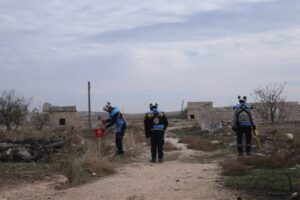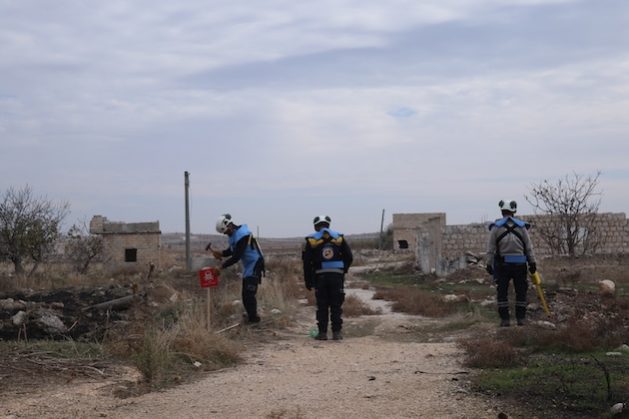
Aid, Asia-Pacific, Civil Society, Democracy, Development & Aid, Featured, Headlines, Human Rights, Humanitarian Emergencies, Migration & Refugees, Sustainable Development Goals, TerraViva United Nations, Women’s Health

– “I was shocked when told by a security guard that the clinic has been closed down. I, along with my relatives, used to visit the clinic for free checkups,” Jamila Begum, 22, an Afghan woman, told IPS.
The clinic has been established by an NGO with the financial assistance of the USAID to reduce maternal complications on the outskirts of Peshawar, the capital of Khyber Pakhtunkhwa, one of Pakistan’s four provinces. Begum, who is near to delivering a baby, says she couldn’t afford the high fee of blood tests and ultrasound examinations in private hospitals and is concerned about her delivery. Fareeda Bibi, an Afghan refugee, is concerned too.
“We have been receiving more than a dozen Afghan women for pre- and post-natal checkups through a clinic funded by the U.S., which has now been shut down,” Bibi, a female health worker, said at a clinic on the outskirts of Peshawar.
Pakistan is home to 1.9 million Afghan refugees and most of the women seek health services in NGO-run health facilities funded by the United States.
“The Afghan women cannot visit remote hospitals and came here conveniently because we have all female staff but all of a sudden, the small clinics have been closed, leaving the population high and dry,” Bibi says. “In the past year, we have received 700 women for free check-ups and medicines, due to which they were able to stay safe from delivery-related complications.”
Jamila Khan, who runs an NGO helping women in rural settings of the Khyber Pakhtunkhwa, one of Pakistan’s four provinces, is also upset by the funding freeze.
“Most of the USAID’s funds were used by NGOs, who will now either be completely closed down or will look for new sources of funds. For the time being, they are struggling to continue operations after the withdrawal of promised funds,” she says.
The suspension of funds by the USAID has hit all sectors in Pakistan, a former employee of USAID, Akram Shah, told IPS.
“The 39 projects funded by the United States included energy, economic development, agriculture, democracy, human rights and governance, education, health, and humanitarian assistance. The suspension order has impacted all,” he says.
President Donald Trump’s directives of suspending USAID funding worldwide after assuming his office also brought to a standstill several projects worth over USD 845 million in Pakistan.
Shah says the abrupt funding cut will badly harm the small landowners who looked towards the USAID but now we are immensely concerned about how to go ahead with our annual plan of going crops without financial assistance.
Our farming has been worst hit as farmers banked on the financial and technical assistance provided by the U.S. to enhance agricultural productivity.
“Most farmers in rural areas have been benefitting from the USAID for a long time, as we got high-quality seeds, tools, fertilizers, etc., which helped us to grow more crops and earn for our sustenance,” Muhammad Shah, a farmer, says.
The health sector is also badly hit, as USAID’s money kept running the Integrated Health Systems Strengthening and Service Delivery Integrated Health System Program, says Dr. Raees Ahmed at the Ministry of National Health Services Regulations and Coordination.
The promised funds of USD 86 million aimed at strengthening Pakistan’s healthcare infrastructure would leave the program half finished, he says. Additionally, Pakistan was supposed to receive USD 52 million under the Global Health Supply Chain Program to ensure the availability of essential medical supplies, but it will be closed down for want of funds.
Education officer Akbar Ali says they had pinned hopes on USAID’s assistance of USD 30.7 million for the Merit and Needs-Based Scholarship Program for the poor students to continue their studies but it has become a dream now.
Ali says the inclusive democratic processes and governance projects, of which USD 15 million was promised, have been halted. The program, in which teachers were also included, was intended to enhance democratic governance and transparency.
Funds for improving governance and the administrative system in the violence-stricken tribal areas along Afghanistan’s border will also stop. The USAID had pledged USD 40.7 million.
Muhammad Wakil, a social activist, says his organization, which is working for a U.S.-funded Building Peace in Pakistan, is also suffering. The program, worth USD 9 million, aimed at fostering religious, ethnic, and political harmony, has had to close.
“We have asked our workers to stay home and have suspended at least 20 workshops scheduled this year,” Wakil says.
He wondered why the United States, a staunch supporter of peace and religious harmony, has stopped funds.
The Mangla Dam Rehabilitation Project, a USD 150 million initiative essential for Pakistan’s energy and water security, has also suffered.
The decision to suspend these aid programs comes as part of a broader restructuring of US foreign assistance under Trump’s “America First” policy.
USAID, established in 1961 under President John F. Kennedy, has long been a cornerstone of US foreign policy, administering approximately 60 percent of the country’s aid budget. In the 2023 fiscal year alone, USAID disbursed USD 43.79 billion in global assistance, supporting development efforts in over 130 countries, media reported.
IPS UN Bureau Report












